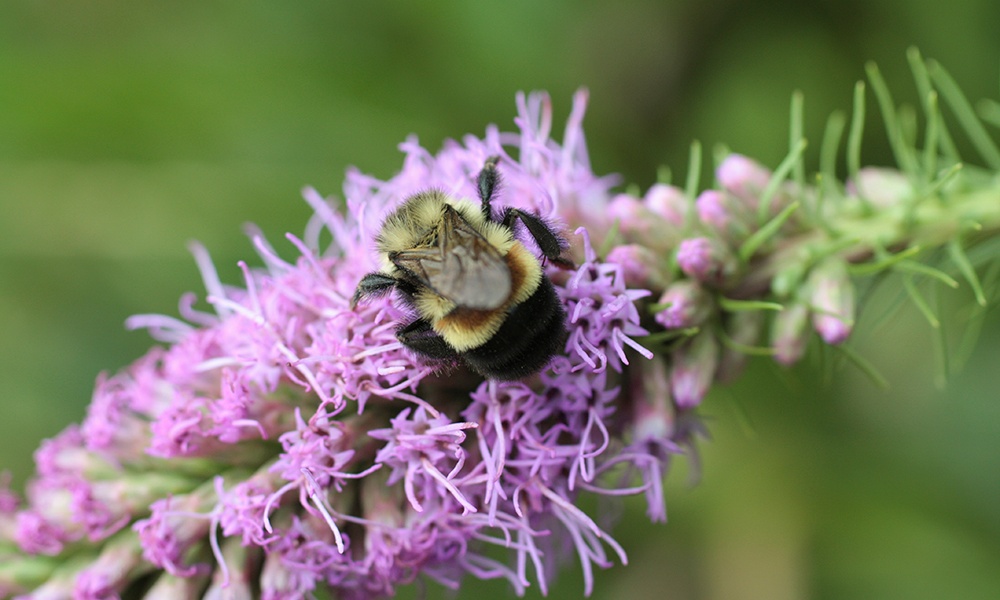
In ecology, timing is everything. While some organisms can be easily found through much of the growing season, others can only be seen for a short time and have peak viewing times of the year.
For many insects, their peak viewing times are tied to the peak bloom times of their favorite plants. If you look around northern Illinois right now, you’ll notice the distinct lavender flowers of wild bergamot (Monarda fistulosa), meaning it’s also prime viewing season for one of our rarest native bumble bees: the federally endangered rusty patched bumble bee (Bombus affinis).
In 2017 they were listed as a federally endangered species due to an 87% decline in population over the last 20 years, and their range is shrinking to about 0.1% of its former historical range. Professionals and citizen scientists are needed to find them to help determine their current range so we can better protect their critical habitat.
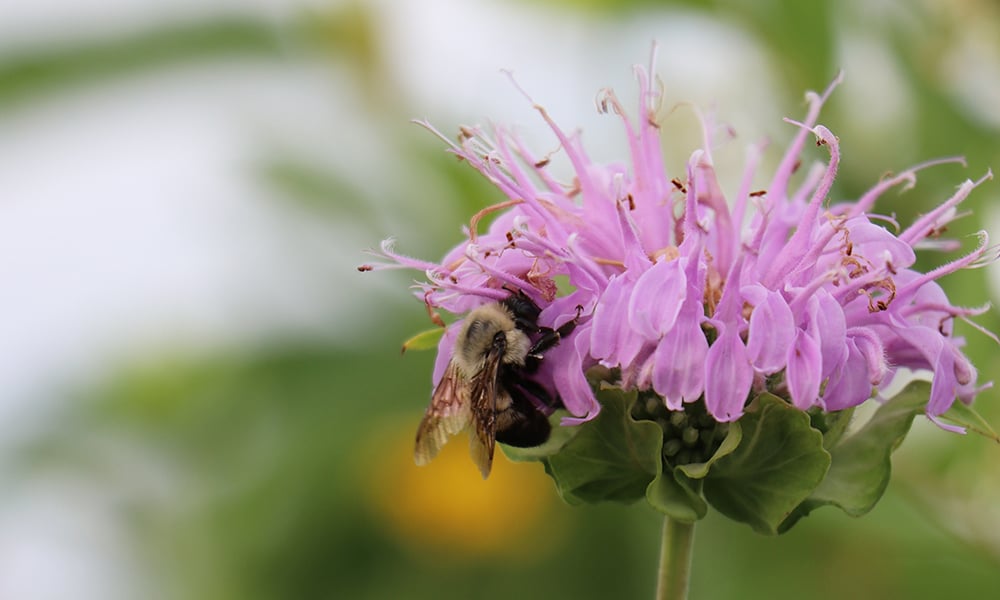
Native bees are strongly attracted to wild bergamot, also known as bee balm, and can be found en masse in areas where it’s present. On a warm, sunny day, grab a camera and find a patch of wild bergamot in a local preserve, park, or backyard. You’ll see an incredible amount and diversity of native bees visiting these flowers.
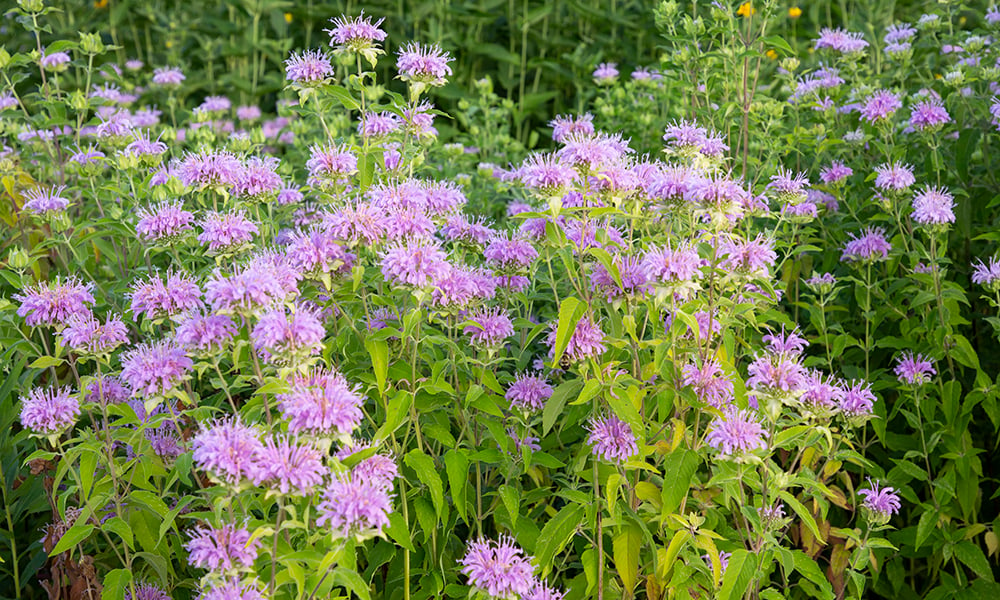
If you’re one of the lucky few to see a rusty patch bumble bee, it’s important to get photographic evidence. Since they are a federally endangered species, you can’t capture them in a net unless you have the proper permits, but photos are a great way to confirm that it is a rusty patched.
But how do you know if you’re looking at a rusty patched? The key is the distinctive red/rust-colored patch on its abdomen, and looking closely at the position of that patch. In rusty patched worker bees, the patch is on the second abdominal segment and surrounded by yellow hairs on the bottom and sides, as you can see in this great pictorial guide.
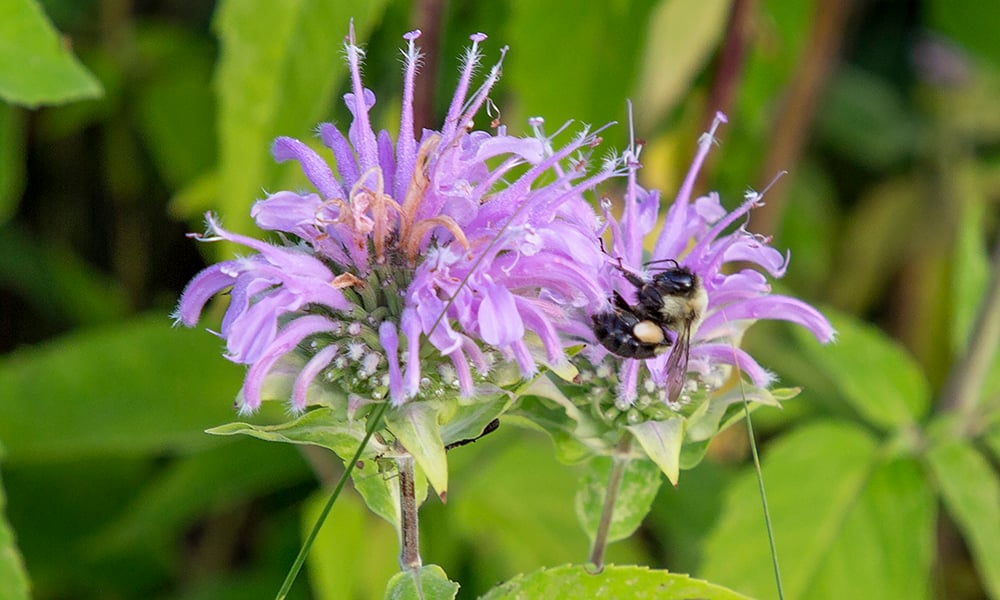
This is a fine but critical distinction, as there are other bees in the area that have similar coloration. In particular, the fairly common brown belted bumble bee (Bombus griseocollis) also has a brownish-colored patch on the second abdominal segment, but in this species the patch is not surrounded by yellow hairs. The uncommon red belted bumble bee (Bombus rufocinctus) often can be confused with rusty patched, though this species has red hairs on multiple abdominal segments.
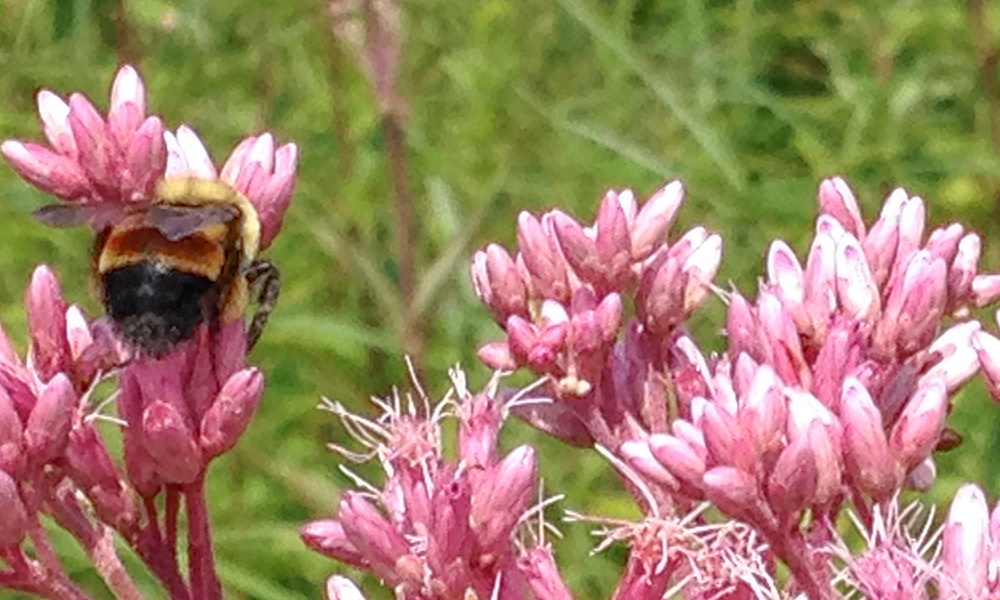
So what to do if you’re one of the lucky few to see them? First and foremost, try to get a photo of it. Photos are a great way to confirm that it’s a rusty patched. The ideal photo will have a clear shot of the rust-colored patch on the abdomen and the flower it’s foraging on.
Getting a clear, in-focus shot of the abdomen can be tricky, as the bees often moving quickly from flower to flower and rarely settle down for long. One way to get around this is to take a short video of the bee on your smart phone. This eliminates the need to get lucky with a perfect shot and allows you to edit the video and find that perfect still shot that highlights the patch.
Once you’re confident you have photographic evidence of rusty patched, you can report it a couple different ways. One fantastic resource is BeeSpotter, a University of Illinois web portal that encourages citizen scientists to get out, take photos of bees, and report these through the portal. This creates an online database of bee observations throughout Illinois and the Midwest. The site provides a step-by-step guide on how to create an account, take good photos, identify bees, and upload observations.
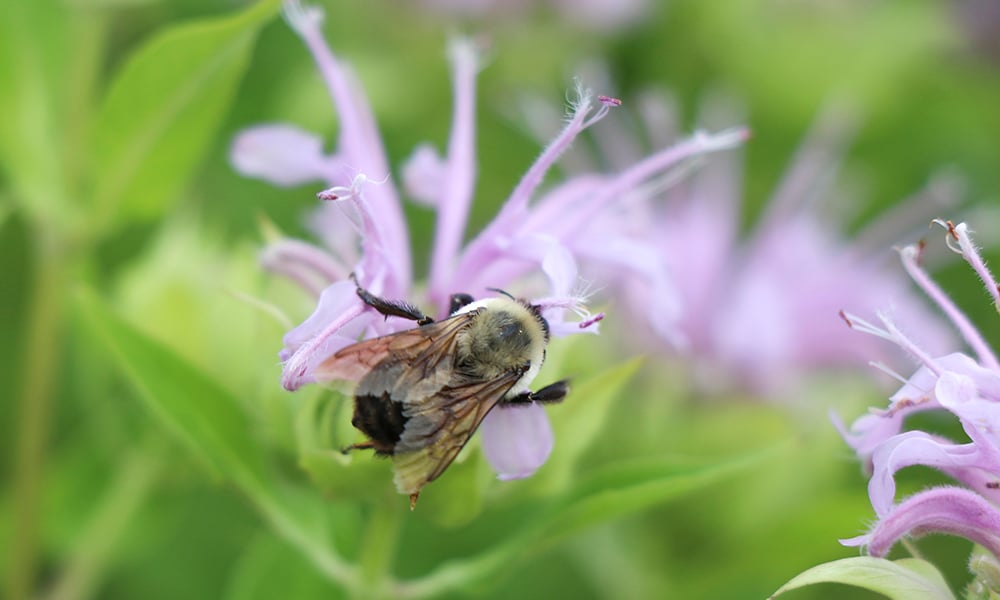
Another way to report rusty patched sightings in Illinois is to contact the Illinois Department of Natural Resources. And of course, if the observation is on DuPage forest preserve property, you can send the single best photo and date/location information to aortega@dupageforest.org.
In our busy world it can be hard to carve out time, and easy to push things off until later. In doing so we can miss opportunities that don’t come around too often. However, if we can all carve out a few minutes a day at the right time of year and just look around, we can help preserve and restore one of our most precious and imperiled species.
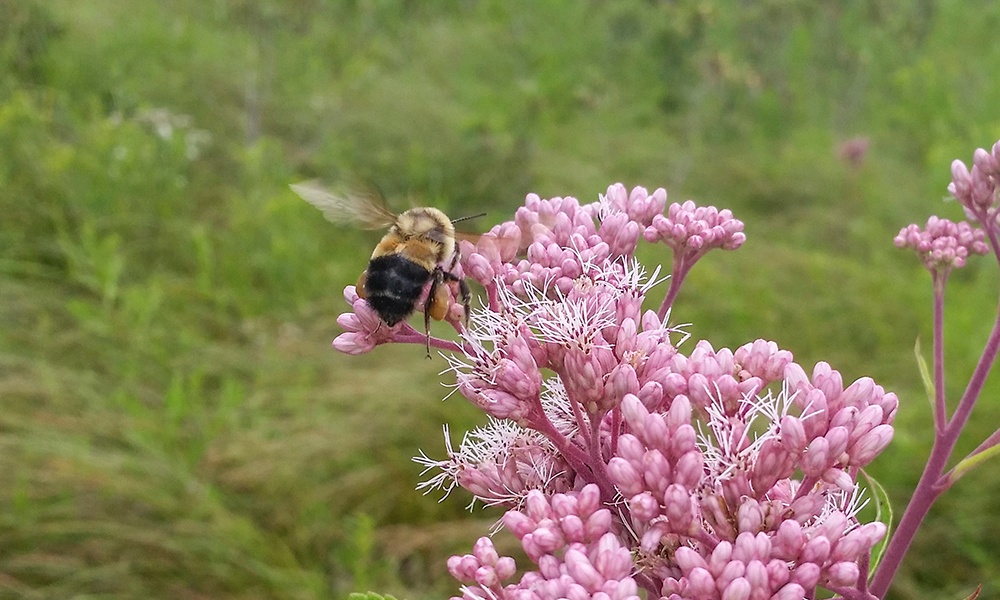
Andres Ortega
